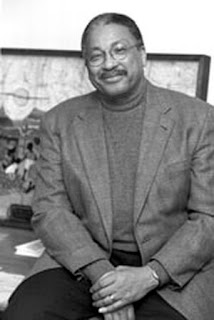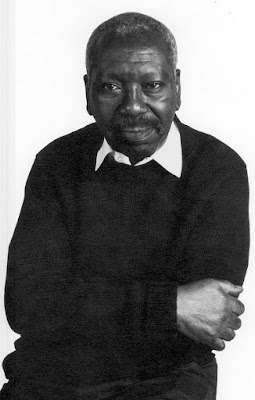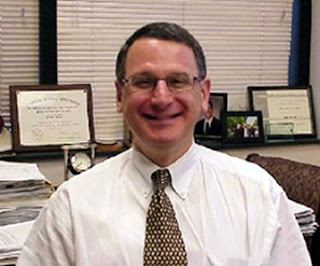 Orin Starn, Professor of Cultural Anthropology, Director of Undergraduate Studies 07-08. Office Location: 208 Sciences Building, East Campus, Box 90091. Office Phone: 919-684-3221. Web Pages: orinstarn.com and golfpolitics.blogspot | "The truth is that the numbers of blacks and other minorities playing professional golf has instead been declining in recent years," says professor Orin Starn Durham, N.C. -- Many people consider it a dopey, snobby, boring game for chubby white men in plaid pants. Even golfers sometimes talk down the sport. "Where else could a guy with an IQ like mine make this much money," the well-known touring professional Hubert Green once said. Tiger Woods was supposed to transform golf, especially its whites-only reputation. When this charismatic black prodigy rocketed to stardom a decade ago, there was optimistic talk about the game opening to African Americans and other minorities. |
It’s spring again, Masters time. But a decade after Tiger’s first triumph at Augusta, it has become apparent that the idea of Tiger as his sport’s racial savior was vastly oversold. The truth is that the numbers of blacks and other minorities playing professional golf has instead been declining in recent years.
Golf was the last major sport to integrate. Only in 1961 did the powerful Professional Golfers Association, or PGA, drop its "Caucasians-only" clause, and even then the first black professionals suffered every indignity. Charles Sifford, the first African American to win a PGA tournament, found human feces in the cup at the Phoenix Open; he received telephoned death threats at another tournament.
The Masters didn’t invite its first black golfer until 1975. As writer Curt Sampson documents, the idea of a good time for Augusta National members before World War II was watching blindfolded local black teenagers beat each other bloody in a boxing ring "battle royal," a few dollars going to the last one standing.
But a cohort of black professional golfers persevered, and there were more than 10 black PGA regulars in the 1970s. Hispanic professionals also made their mark, among them Lee Trevino, the smart, garrulous self-described "Super Mex" who became one of the top players of his time.
But consider this: Tiger is today the lone African American among the 125 players on the PGA tour. And there are just two Latinos: Robert Gamez and Pat Perez.
Only one black golfer, Tim O’Neal, plays the minor league Nationwide tour. There is not a single African American on the women’s professional golf tour despite the influx of fine Asian and Asian American players, a lesser force in men’s golf.
Even black caddies have almost vanished altogether. As the job became lucrative with mushrooming tournament purses, whites moved in to carry the bags. Tiger’s New Zealand-born caddy, Steve Williams, probably made over a million dollars last year.
What explains the resegregation of professional golf? Ironically, Tiger’s standard of excellence is part of the problem. Training a top golfer now demands specialized intensive instruction from a young age, in the way of figure skating or gymnastics. Although the black and Latino middle class has grown, comparatively few minority families can afford to send talented children to the expensive private golf academies that have sprung up to manufacture the future’s professional stars.
The golf cart also bears some blame. As servile as it may be to tote another man’s clubs, caddying exposed generations of poor kids to a rich man’s game. Famous old-time stars like Walter Hagen and Gene Sarazen got their start in the caddyshack, as did Sifford and the other black pros of the 1970s. Except for a few high-end clubs and the professional golf tours, caddies have been replaced by golf carts, closing off that pathway of upward mobility into the sport.
But nobody seems to be paying much attention to the fact that professional golf is trending back toward becoming whites-only all over again, especially the men’s game. We live in a part-fatalistic, part-cynical, Crash-style era of "race fatigue," where many Americans feel it to be pointless and even naïve to imagine progress toward bridging the divides of color and class in this country. As much as most people would like to be rid of the silly, strange yet powerful folk belief that skin color says something essential about the person inside, the unhappy American history of racial discrimination, hierarchy and mistrust haunts us no matter how much we might want to ignore it or wish it away.
As much as most people would like to be rid of the silly, strange yet powerful folk belief that skin color says something essential about the person inside, the unhappy American history of racial discrimination, hierarchy, and mistrust haunts us no matter how much we might want to ignore it or wish it away. Here at Duke we’ve been forced to confront this painful truth just now with the terrible allegations against white university lacrosse players of raping a black woman at a student party.
As for Tiger, if he triumphs again at the Masters, he’ll don the victor’s traditional green jacket to applause from Augusta’s millionaire members, tournament ticketholders and fellow competitors and their caddies.
He’ll be one of the only brown faces in a sea of white.
Note to Editors: Orin Starn is a cultural anthropology professor at Duke who is currently writing a book about golf and American society
© 2008 Office of News & Communications. 615 Chapel Drive, Box 90563, Durham, NC 27708-0563 (919) 684-2823; After-hours phone (for reporters on deadline): (919) 812-6603































